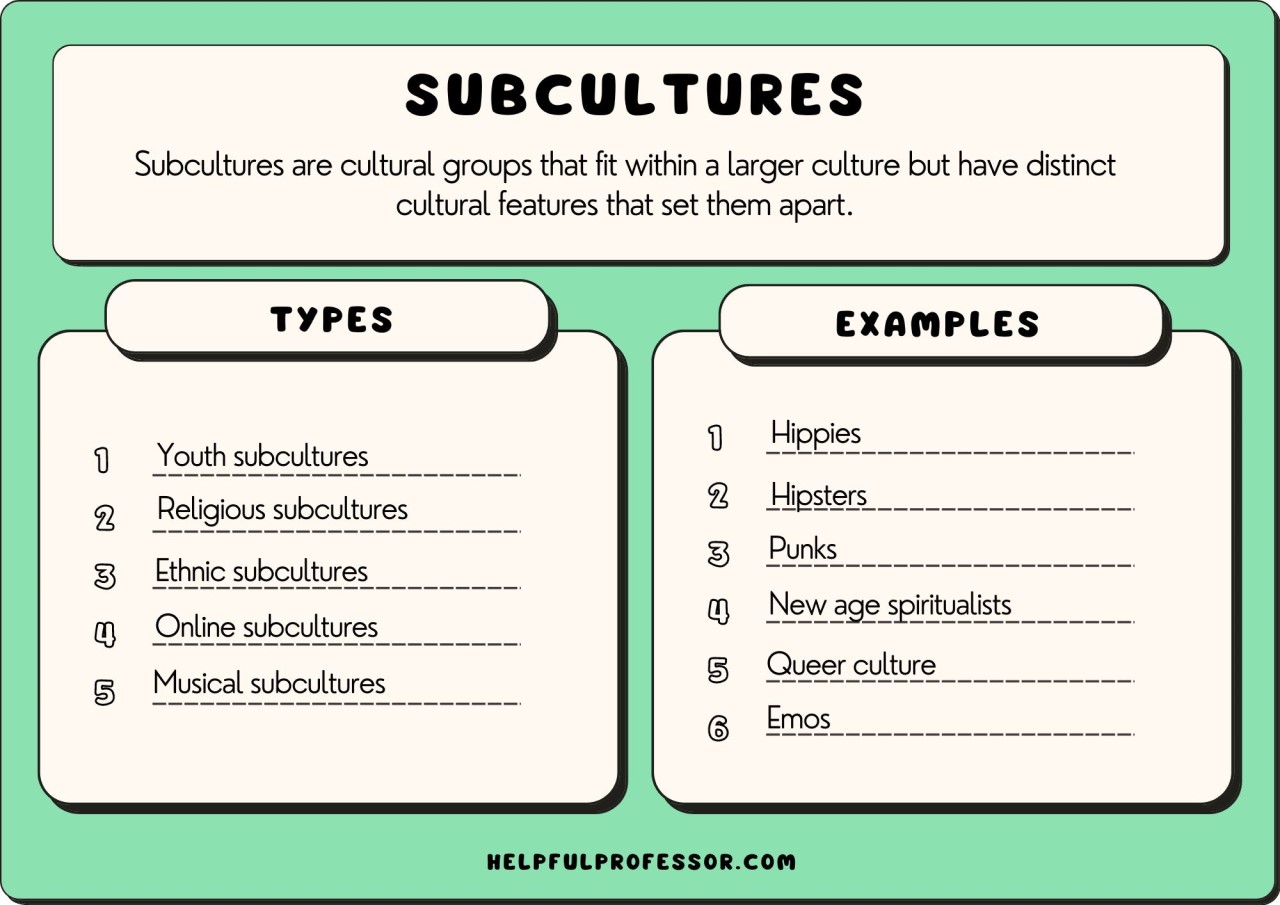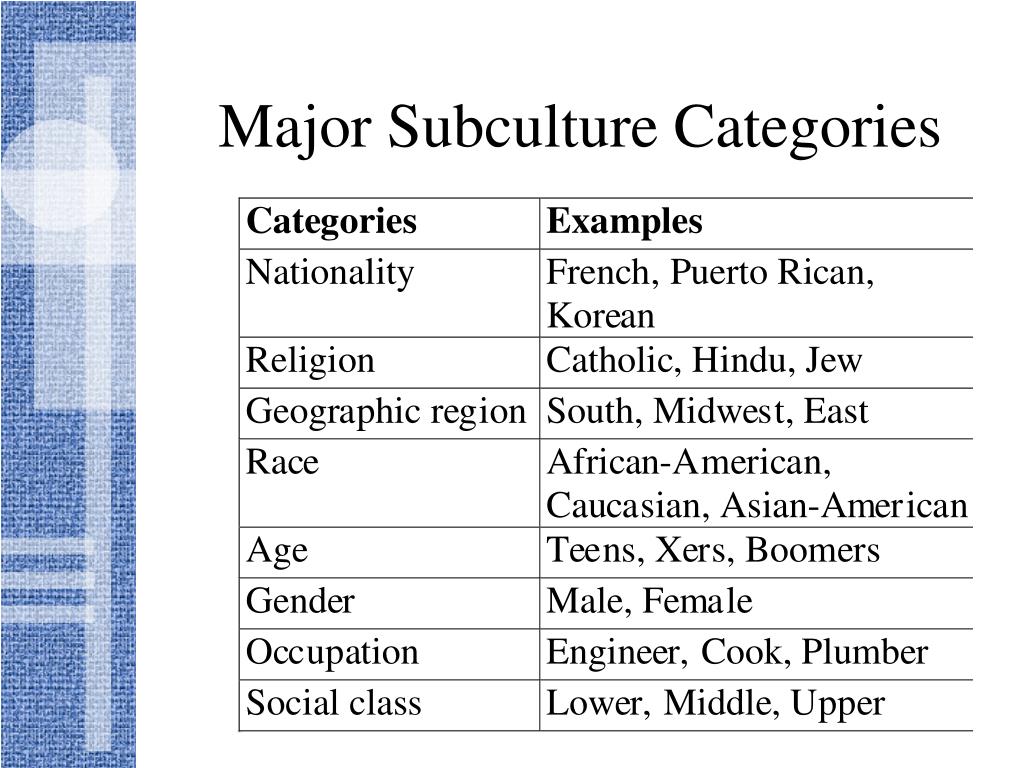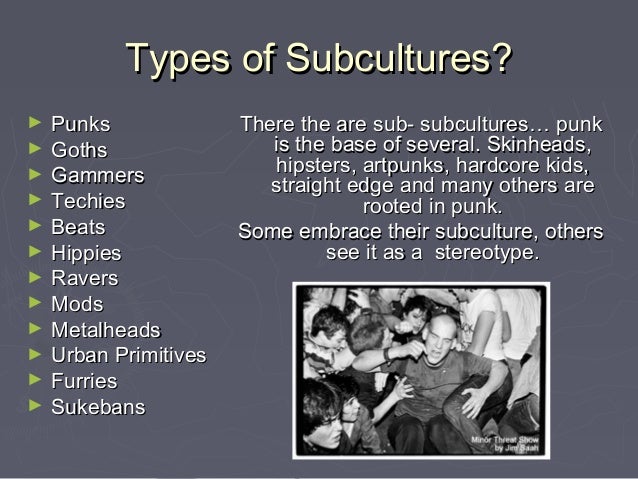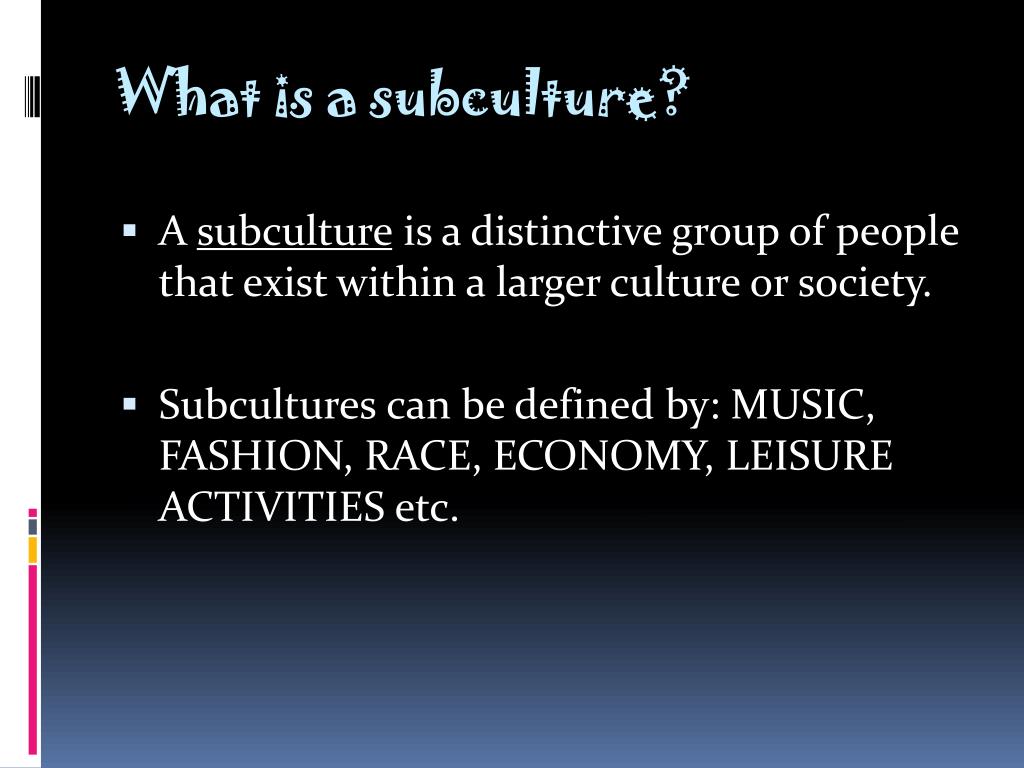Which Of The Following Is An Example Of A Subculture

The question "Which of the following is an example of a subculture?" appears frequently in various contexts, from academic quizzes to general knowledge assessments. Understanding the concept of subcultures is crucial for comprehending societal diversity and the multifaceted ways people identify and connect with one another.
This article will explore the defining characteristics of a subculture, examine several potential examples, and clarify how subcultures differ from broader cultural trends. It will draw upon sociological definitions and real-world examples to provide a comprehensive understanding.
A subculture is generally defined as a group within a larger culture that shares distinct values, beliefs, behaviors, and norms. These shared characteristics differentiate them from the dominant culture.
Unlike a simple demographic group, a subculture actively participates in practices and adopts symbols that signify their affiliation. These can include specific types of music, fashion, language, or hobbies.
Defining Characteristics of a Subculture
Key components of a subculture include a shared identity. This identity is often expressed through symbolic markers like clothing or specialized language.
Secondly, a distinct set of values and beliefs sets them apart. This helps determine what is seen as appropriate or inappropriate behavior within the group.
Finally, a sense of community is important. This offers mutual support and strengthens the group's cohesion.
Examples of Subcultures
Consider the following potential examples and assess them against the above criteria. These help solidify the theoretical understanding of the term.
Gamers: The gaming community, spanning various platforms and genres, is a strong contender. With its own language (e.g., "noob," "GG"), conventions (e.g., esports tournaments), and shared passion, the gaming world shows characteristics of a subculture.
Cosplayers: Participants in cosplay, who create and wear costumes representing fictional characters, form a vibrant subculture. They have conventions, online forums, and a strong sense of shared identity through their craft.
Goths: The goth subculture, with its roots in the post-punk music scene, is another classic example. Marked by dark clothing, specific musical tastes, and a fascination with the macabre, it represents a clear departure from mainstream norms.
Vegans: Veganism is often seen as a lifestyle choice based on ethical, environmental, or health concerns. While it has elements of a subculture due to shared values and practices (e.g., dietary restrictions, animal rights activism), it is broader and overlaps with other movements.
Therefore, *Vegans* are not strictly a subculture. It should be said that it has become increasingly recognized and normalized in recent years, and more accurately, it is identified as a social movement.
Distinguishing Subcultures from Broader Cultural Trends
It's essential to distinguish subcultures from general cultural trends. A widespread trend, like a specific fashion style adopted by many, doesn't necessarily constitute a subculture.
What often separates subcultures from trend is the depth of commitment and the degree of differentiation from the dominant culture. Subcultures tend to be more tightly knit and conscious of their identity.
An example could be how skateboarding went from subculture to trend. In the late 20th century, it was a distinct subculture with its own language, style, and rituals. Now, skateboarding influences broader fashion and lifestyles.
The Significance of Subcultures
Subcultures contribute significantly to societal diversity. They offer spaces where individuals can express themselves, find like-minded people, and explore alternative identities.
Subcultures can also act as incubators for social change. They often challenge mainstream norms and introduce new ideas, eventually influencing broader cultural shifts.
For instance, the 1960s counterculture played a crucial role in shaping attitudes toward civil rights, environmentalism, and sexual liberation, as evidenced by sources in journals like the American Sociological Review.
Furthermore, subcultures foster creativity and innovation. This gives a platform for artists, musicians, and thinkers to experiment and push boundaries.
Potential Impact and Considerations
The study of subcultures is important for understanding social dynamics. This helps in addressing issues related to inclusion, prejudice, and cultural understanding.
Researchers and policymakers can leverage insights from subcultural studies. This can facilitate more effective social policies and community engagement initiatives.
However, stereotypes and misconceptions about subcultures can lead to discrimination. It's crucial to approach their study with respect and an awareness of their diverse expressions.
In conclusion, understanding the nuances of what constitutes a subculture is crucial for both academic and practical purposes. While many groups share common interests, those that exhibit a shared identity, distinct values, and a strong sense of community can accurately be identified as such.


















